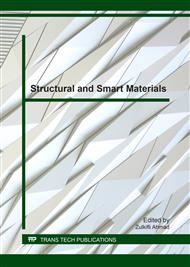p.58
p.63
p.68
p.75
p.80
p.86
p.93
p.99
p.104
Investigation on Variation of Bow Defect in Roll Forming Process
Abstract:
Roll forming is a kind of plastic forming process in which a steel strip is bent by several sets of rolls gradually into the desired shape. The products are cold roll forming steels with various sections. Roll forming is one of the most widely used processes in the world for forming metal. Roll forming is a complex deformation process, which involves large displacement, finite strain and the problems of contact and friction between strip and rolls. This process exhibits obvious geometry, physical and boundary nonliterary. The complex processes contain many aspects such as geometry, kinematics and dynamics, etc. The forming process involves not only transverse bending, but also other additional deformations. In this paper, a group of simulations have been established with ABAQUS software to studying about the spring back and bow defect in the roll forming process. At last, experiments have been accomplished to verify the simulation results. The simulations based on the ABAQUS software calculate the spring back angles and bow displacements. The bow displacement of the roll forming process is considered relate to many factors include inner distance between stands, gaps of the rolls, channel width, the material of the sheet, sheet thickness and so on.To verify the bow displacement in roll forming process, 9 groups of simulations were set up use Taguchi method to figure out the influence on bow displacement of every factor. The longitudinal strain also has been learned in the present study.
Info:
Periodical:
Pages:
80-85
Citation:
Online since:
February 2017
Authors:
Keywords:
Price:
Сopyright:
© 2017 Trans Tech Publications Ltd. All Rights Reserved
Share:
Citation:


